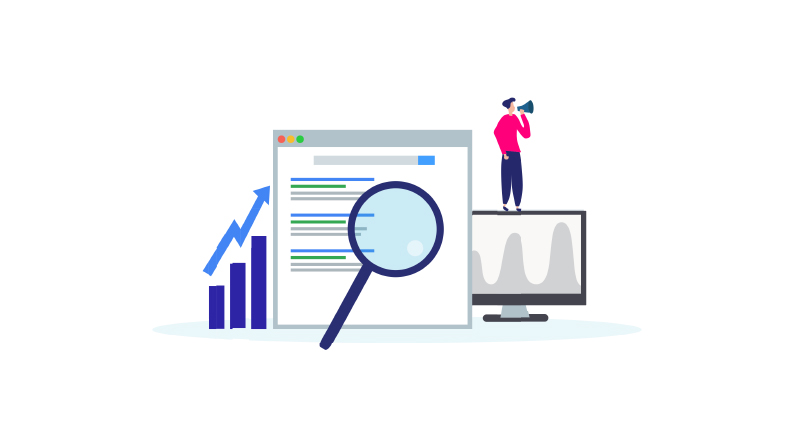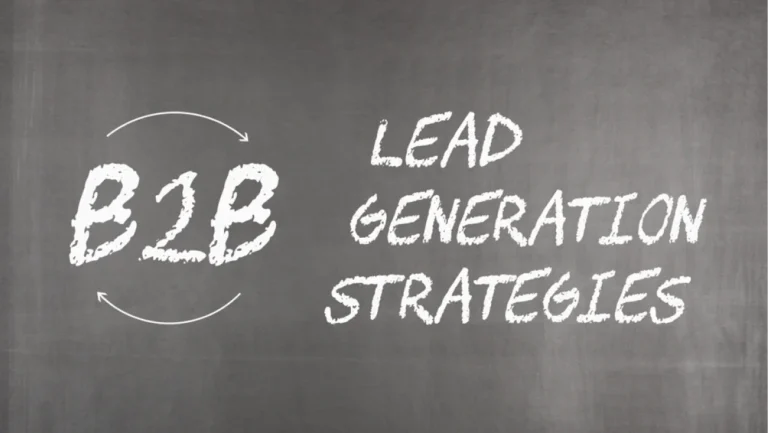Understanding and harnessing the potential of buyer intent keywords can be the key to unlocking remarkable sales success.
While traditional keywords focus on general search queries, buyer intent keywords dive deeper into the minds of consumers, targeting those actively seeking to make a purchase.
This article tackles the significance of buyer intent keywords and provides actionable insights on leveraging them effectively.
What Are Buyer Intent Keywords?

Buyer intent keywords are specific phrases or terms used by online users during their search that indicate a strong intention to make a purchase.
Unlike general keywords, which might encompass a broad range of queries, buyer intent keywords signal a clear desire to buy. They make them invaluable for businesses looking to connect with potential customers who are further along in the decision-making process.
What Are the Benefits of Targeting Buyer Intent Keywords?
When you focus your digital marketing efforts on targeting buyer intent keywords, you tap into a treasure trove of advantages that can significantly enhance your sales and ROI. Here’s why targeting buyer intent keywords is a game-changer:
- Higher Conversion Rates: Buyer intent keywords bring you closer to customers ready to buy, resulting in a higher likelihood of conversion.
- Reduced Wasted Efforts: By honing in on motivated buyers, you avoid wasting resources on uninterested or casually browsing users.
- Shorter Sales Cycle: Engaging with individuals looking to purchase can shorten the sales cycle, accelerating revenue generation.
- Improved ROI: With a more precise audience, your marketing campaigns become more efficient, translating into improved return on investment.
- Enhanced Content Relevance: Creating content around buyer intent keywords ensures your messaging resonates with potential buyers’ specific needs and concerns.
Incorporating buyer intent keywords into your strategy empowers you to connect with individuals who are on the brink of making a purchase, optimizing your efforts for maximum impact.
Types of Buyer Intent Keywords

Buyer intent keywords come in various forms, each representing a different stage of the purchasing journey. Understanding these types is crucial for tailoring your content to meet user needs.
Awareness-Stage Keywords
At the beginning of the buyer’s journey, users seek solutions to their problems. Awareness-stage keywords are informational, addressing users’ questions and pain points. These keywords often start with phrases like “how to,” “what is,” or “tips for.”
Content targeting these keywords should focus on educating and building trust. For example, if you’re selling skincare products, an article on “How to Choose the Right Moisturizer for Your Skin Type” could attract users in the awareness stage.
Consideration-Stage Keywords
As users move further along their journey, they start considering specific solutions. Consideration-stage keywords reflect their intent to explore options. These keywords might include terms like “best,” “top,” or “comparison.”
Your content should highlight the benefits and features of your offerings, positioning them as viable solutions. For instance, if you offer project management software, an article titled “Top Project Management Tools Compared” aligns with consideration-stage keywords.
Decision-Stage Keywords
In the final stages, users are ready to make a purchase decision. Decision-stage keywords are action-oriented and often include phrases like “buy,” “order,” or specific product names.
Your content should focus on showcasing product details, pricing, and incentives to prompt immediate action. For a company selling cameras, an optimized landing page titled “Buy the Latest XYZ Camera Model – Special Discount Inside” targets users in the decision stage.
By aligning your content with these distinct buyer intent keyword types, you can effectively guide users through their journey, providing the information they need at each stage to make informed purchasing decisions.
Identifying Buyer Intent In Your Target Audience

Understanding the buyer intent within your target audience is a pivotal aspect of successful digital marketing. By recognizing the specific types of buyer keywords they use, you can tailor your strategies to meet their needs effectively.
Four Types of Buyer Keywords
These are the different categories of buyer keywords:
Informational Keywords
These keywords reflect users in the early stages of their research process. They’re seeking information and answers to their questions. They often include terms like “how to,” “benefits of,” or “guide to.” Crafting content around these keywords establishes your authority and builds trust with potential customers.
Navigational Keywords
Users employing navigational keywords are looking for a specific website or brand. These keywords often contain the brand name, such as “Nike running shoes” or “Amazon electronics.” Optimizing for navigational keywords ensures your brand remains easily discoverable when users are ready to engage.
Commercial Keywords
When users are in the consideration phase, they use commercial keywords to compare options and evaluate products or services. These keywords include terms like “best,” “top-rated,” or “reviews of.” Creating content that highlights the unique selling points of your offerings can sway users toward choosing your brand.
Transactional Keywords
Transactional keywords signify users in the final stages of their journey, ready to purchase. These keywords often feature terms like “buy,” “discount,” or “order.” Optimizing for transactional keywords involves creating compelling calls-to-action and clear pathways to conversion.
Conduct Research On Your Existing Customer Base
Your current customer base holds a wealth of insights. Analyzing their behaviors, preferences, and buying patterns can reveal valuable buyer intent information.
Utilize surveys, feedback forms, and analytics tools to comprehensively understand why your customers choose your products or services. This data can guide you in identifying common buyer intent keywords and tailoring your strategies accordingly.
Analyze Search Engine Behavior and User Queries

Leverage search engine behavior and user queries to uncover buyer intent patterns.
By examining the keywords users employ when actively seeking solutions, you can gain insight into their stage in the purchasing journey. Tools like
Google Analytics and keyword research platforms provide valuable data on search volume, competition, and related queries, helping you refine your keyword strategy to target users with specific buyer intent.
A combination of understanding your ideal customers, mining insights from your existing customer base, and deciphering search engine behavior will empower you to identify buyer intent keywords that drive engagement and conversions.
This proactive approach ensures your marketing efforts align with the real-time needs of your audience, giving you a competitive edge in the digital landscape.
Utilize A Variety of Sources For Information On Buyer Intent
Effectively tapping into the mindset of potential buyers requires a diverse range of information sources to truly understand their intent.
By gathering insights from multiple channels, you can paint a comprehensive picture of your target audience’s motivations and preferences, refining your strategies to connect with them on a deeper level.
- Customer Surveys and Feedback
Engage with your audience directly through surveys and feedback forms. You can gather firsthand insights into their buyer intent by asking targeted questions about their needs, pain points, and purchase motivations. Analyze their responses to uncover recurring themes and tailor your approach accordingly.
- Social Media Engagement
Monitor discussions and interactions on social media platforms. Pay attention to the questions users ask, the content they engage with, and the sentiments they express. These interactions can provide valuable clues about their interests, concerns, and desires, guiding your keyword optimization and content creation.
- Competitor Analysis
Study your competitors’ strategies and their interactions with their audience. Analyze their content, social media posts, and customer engagement tactics. By understanding what resonates with their audience, you can identify potential gaps in their approach and find ways to position your offerings uniquely.
You create a well-rounded view of buyer intent by harnessing insights from customer surveys, social media engagement, and competitor analysis. This multidimensional understanding enables you to craft targeted content and strategies that cater to your audience’s specific needs and desires, driving higher engagement and conversion rates.
Find and Optimize Content On Buyer Intent Keywords
To harness the potential of buyer intent keywords, you must identify them and optimize your content effectively. This involves using specialized tools for research and understanding different keyword types.
Using The Right Tools To Research And Evaluate Buyers’ Needs
- Keyword Research Tools: Utilize tools like Google Keyword Planner, SEMrush, or Ahrefs to discover relevant buyer intent keywords. These tools provide insights into search volume, competition, and related queries, helping you pinpoint the most valuable keywords.
- Audience Analytics: Dive into your website and social media analytics to gain a deeper understanding of your audience’s behavior. Analyze which content resonates most, the pages they spend time on, and the keywords that drive traffic.
- Social Listening Platforms: Employ social listening tools to monitor conversations and discussions related to your industry. This helps identify trends, pain points, and emerging topics that can guide your keyword optimization.
Various Types Of Keywords To Consider For Optimization
- Long-Tail Keywords: These longer, more specific phrases often indicate high buyer intent. They may include location, product features, or specific questions users have. Crafting content around long-tail keywords can attract users actively seeking solutions.
- Product-Centric Keywords: Focus on keywords directly related to your products or services. Include product names, model numbers, and variations to capture users who are close to making a purchase decision.
- Comparison Keywords: Optimize for keywords that involve comparing different products or services. Users searching for “X vs. Y” are likely in the consideration phase and looking for insights to inform their decision.
- Problem-Solution Keywords: Address users’ pain points by optimizing for keywords that reflect their challenges and offer solutions. This establishes your brand as a problem solver and attracts motivated users.
By using the right tools and understanding various keyword types, you can effectively find and optimize content around buyer intent keywords. This approach not only boosts your visibility among motivated users but also positions your brand as a relevant and valuable resource throughout their purchasing journey.
Optimize Your Website’s Content And Get Purchase-Ready Buyers To Convert
Harnessing the power of buyer intent keywords is the key to unlocking a world of possibilities.
From awareness to conversion, buyer intent keywords guide users along their journey, ensuring your offerings align seamlessly with their intent.
At LeadOrigin, we stand as an industry leader in web design and development, offering comprehensive services to small and medium-sized businesses across various industries.
We’re committed to transforming your online presence into a conversion-driven powerhouse in Austin, Dallas, and Houston, TX.
Let us help you optimize your website’s content and leverage the potential of buyer intent keywords to drive conversions, connect with motivated buyers, and propel your business to new heights.
Your success is our priority, and together, we’ll pave the path to sustainable growth. Contact us and book a consultation today!






